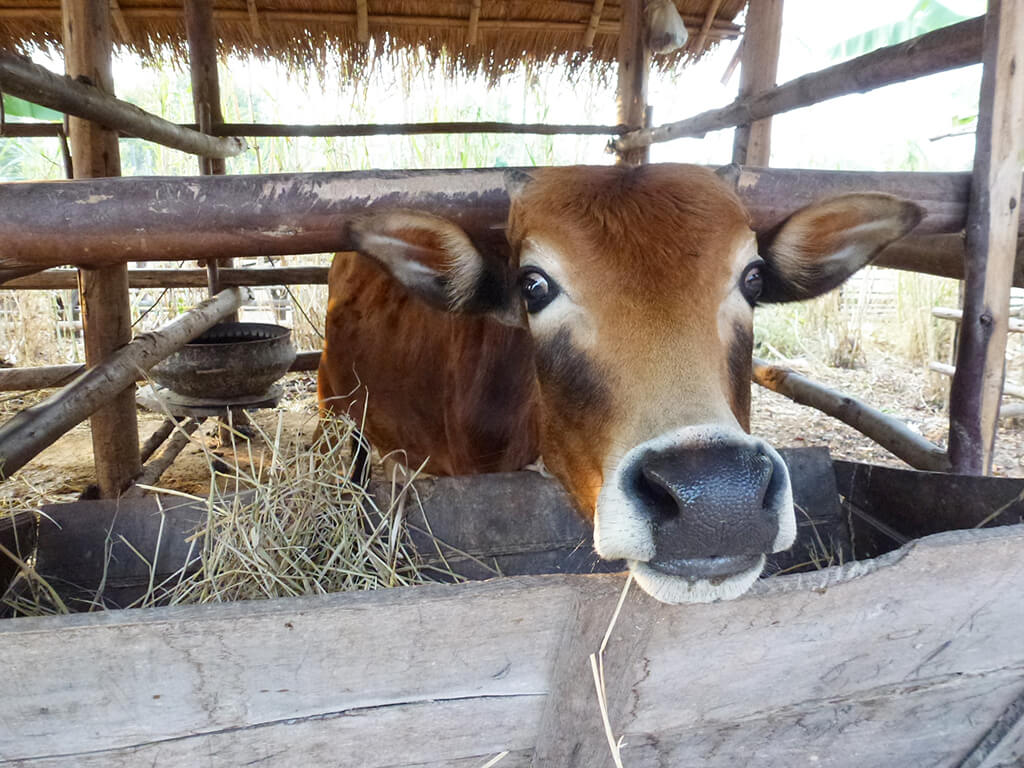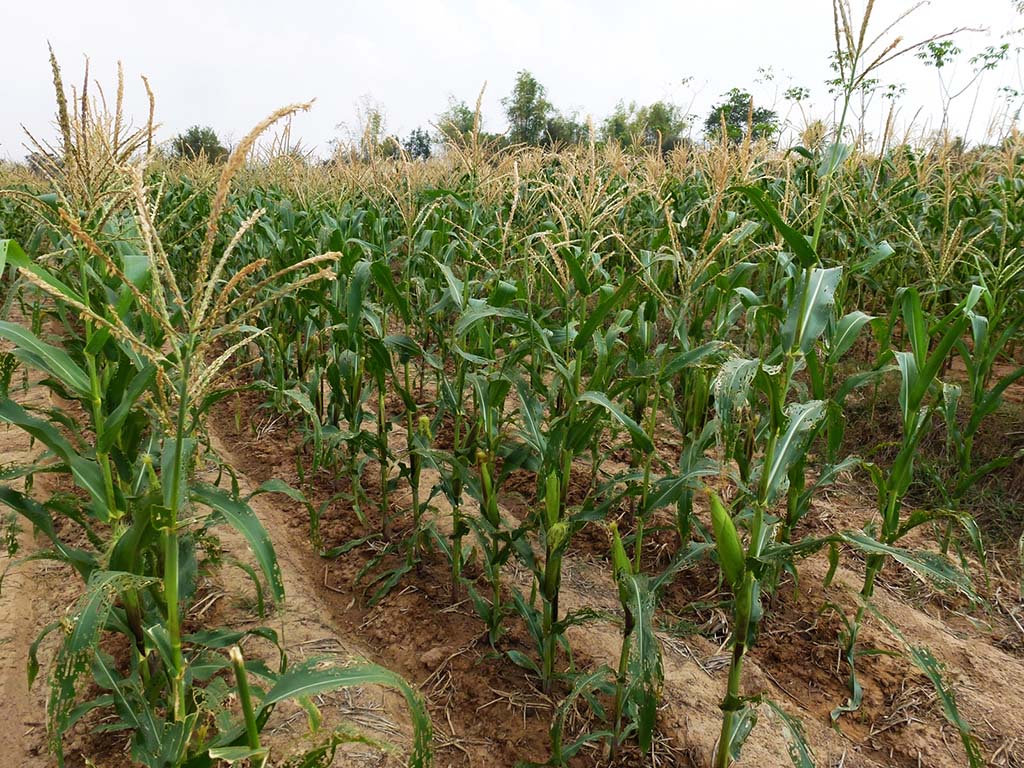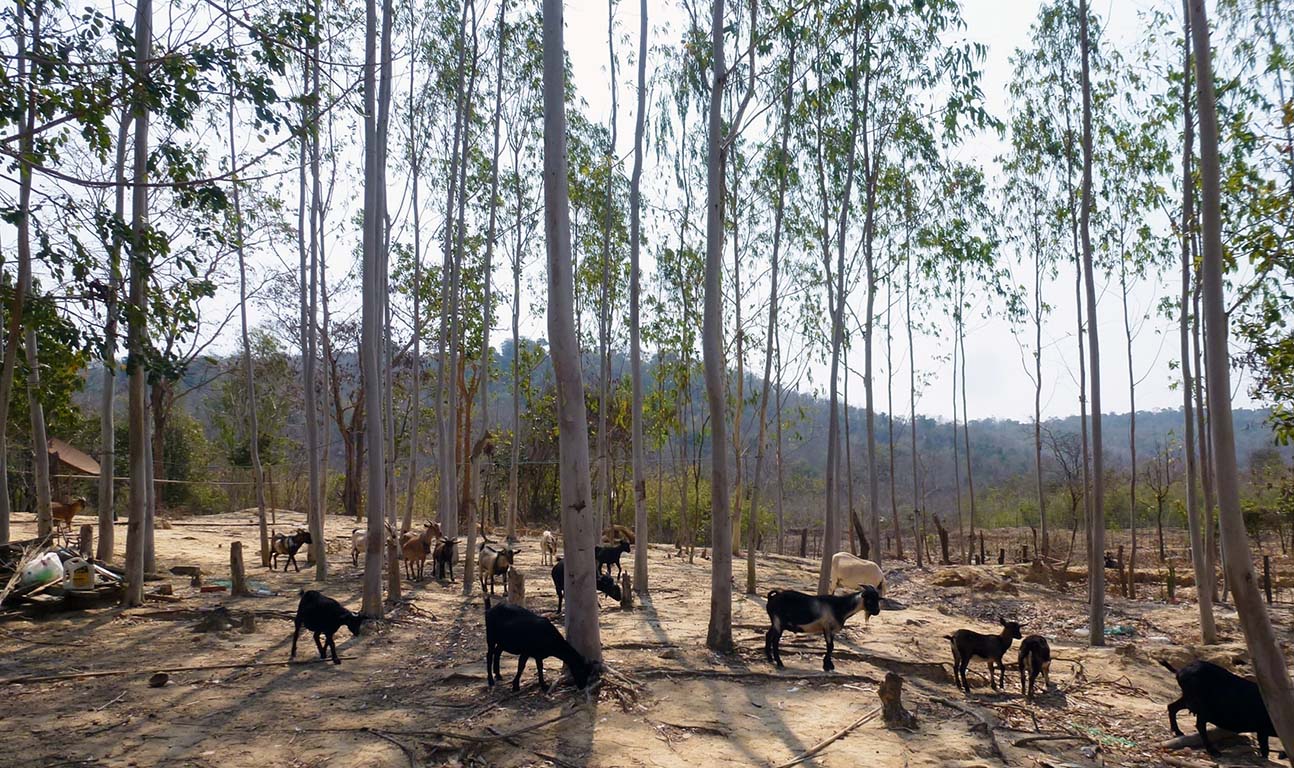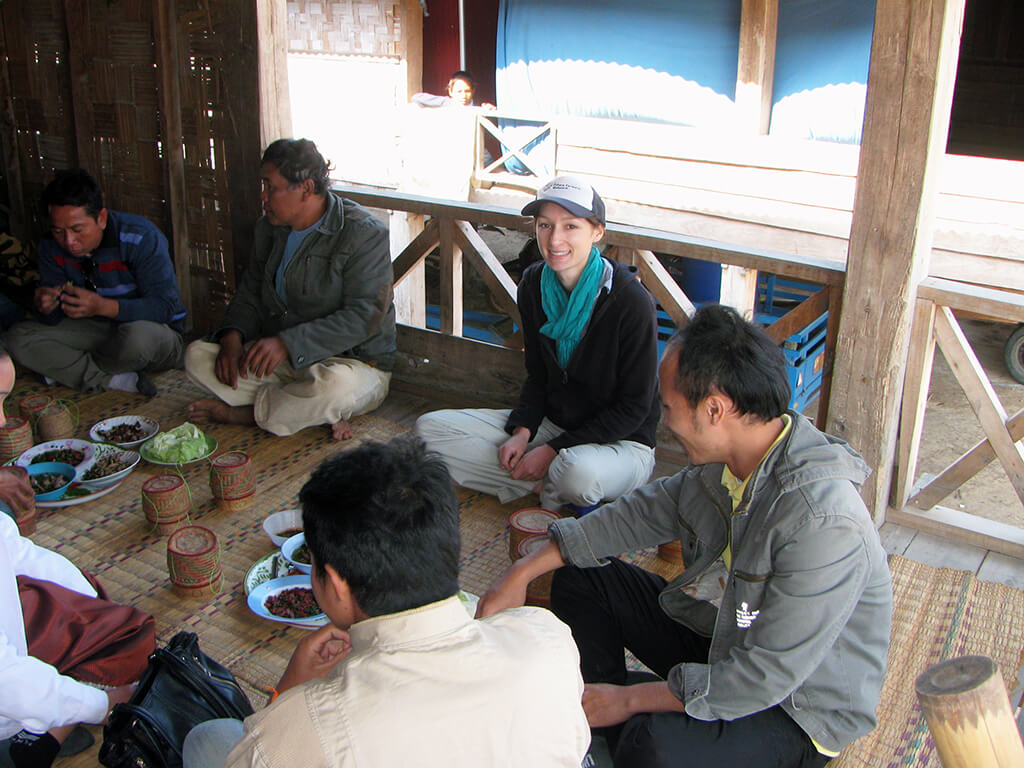Integrated crop-livestock systems, Laos
Two big chocolate brown eyes looked up at me from behind long dark eyelashes. This cow knew how pretty she was, and nonchalantly posed for my photos. She was standing in her stall, coolly chewing away at the rice straw in the trough, gazing out at the world around her. The manure would later be collected from her stall, and applied to the field where new crops would be grown, and more fodder produced for her feed. In integrated crop-livestock systems the inputs and outputs of the crop and animal enterprises are inextricably linked. Laotian farming households use this practice in an attempt to maximise their returns from limited land and capital.

A large proportion of poor farmers depend on livestock as a means of security, supply of vital dietary proteins, and a cash income source. Smallholder farmers have traditionally used naturally occurring forages as the primary feed for livestock, and have supplemented these with cereal residues (e.g. rice straw and maize stover), sugar-cane tops, grain legume haulms (e.g. peanut and cowpea), root crop tops and vines (e.g. cassava and sweet potato), oilseed cakes and meals (e.g. oil palm kernel cake, cottonseed cake and copra cake), rice bran, fruit pulp, coffee seed pulp and bagasse. Crop residues used for feed vary widely depending on location and availability, but provide livestock with fodder when feed is scarce in the dry months, and when roaming is restricted during the wet months.

In developed countries, manure from livestock is sometimes regarded as an environmental villain. Waste products are often seen as polluting water resources and presenting disposal difficulties. However, this is a stark contrast to attitudes in Laos, where waste products— manure and urine holding precious nutrients— are highly regarded for soil conditioning. Organic materials applied in bulk can improve soil texture, promote better absorption of moisture, reduce run-off, reverse the deterioration in soil structure in sodic soils, and prevent crusting of the soil surface. Improved utilisation of manure benefits crop production, which in turn provides flow-on benefits to livestock rearing and the corresponding income of farmers.

Apart from feeding crop residues to large livestock, some Laotian farmers are integrating other crop and animal operations. Duck-rice paddy integration is one of these, where ducks are added to paddy fields at a young age, and grow up eating weeds, insects, snails and crabs- a natural weed and pest eradicator! The ducks also help to aerate the soil between rice plants, and fertilize them naturally. When plump and the rice crop is ready for harvest, the ducks are sold to market. Comparable to the duck operation, fish are also added to some flooded paddy fields, to help keep weed and pest numbers low, and likewise provide a second product for market and domestic consumption.
There is marked complementarity in resource use in these systems, with outputs from one sector being supplied to others. The waste products (crop residues) of one enterprise (crop production) can be used by another enterprise (animal production), which returns its own waste (manure) back to the first enterprise. As a way of diversifying the sources of income and employment for resource-poor farmers, integrated crop-livestock farming offers considerable potential for poverty alleviation in rural areas. Since women play an important role in animal production, the development of this sub-sector is also of relevance to the promotion of gender equity.
In Australia, where scale, technology and specialisation rule the agricultural landscape, I think we should look at these integrated systems as a means of diversifying income, supporting genetic variety, and protecting natural biodiversity. Healthy, cyclic systems can teach us many lessons of sustainability.




